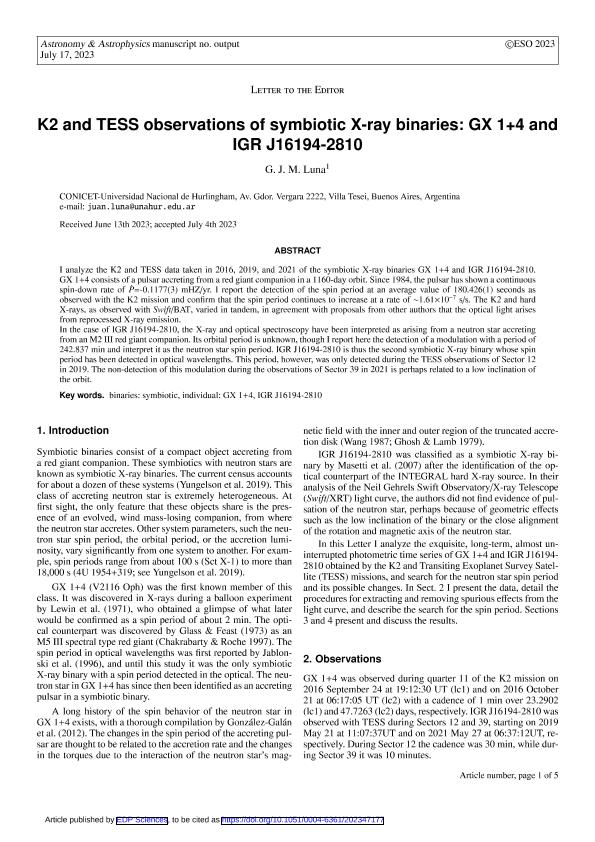Artículo
K2 and TESS observations of symbiotic X-ray binaries: GX 1+4 and IGR J16194-2810
Fecha de publicación:
07/2023
Editorial:
EDP Sciences
Revista:
Astronomy and Astrophysics
ISSN:
0004-6361
Idioma:
Inglés
Tipo de recurso:
Artículo publicado
Clasificación temática:
Resumen
I analyze the K2 and TESS data taken in 2016, 2019, and 2021 of the symbiotic X-ray binaries GX 1+4 and IGR J16194-2810. GX 1+4 consists of a pulsar accreting from a red giant companion in a 1160-day orbit. Since 1984, the pulsar has shown a continuous spin-down rate of P = -0.1177(3) mHZ yr-1. I report the detection of the spin period at an average value of 180.426(1) seconds as observed with the K2 mission and confirm that the spin period continues to increase at a rate of ∼1.61× 10-7 s s-1. The K2 and hard X-rays, as observed with Swift/BAT, varied in tandem, in agreement with proposals from other authors that the optical light arises from reprocessed X-ray emission. In the case of IGR J16194-2810, the X-ray and optical spectroscopy have been interpreted as arising from a neutron star accreting from an M2 III red giant companion. Its orbital period is unknown, though I report here the detection of a modulation with a period of 242.837 min and interpret it as the neutron star spin period. IGR J16194-2810 is thus the second symbiotic X-ray binary whose spin period has been detected in optical wavelengths. This period, however, was only detected during the TESS observations of Sector 12 in 2019. The non-detection of this modulation during the observations of Sector 39 in 2021 is perhaps related to a low inclination of the orbit.
Archivos asociados
Licencia
Identificadores
Colecciones
Articulos(SEDE CENTRAL)
Articulos de SEDE CENTRAL
Articulos de SEDE CENTRAL
Citación
Luna, Gerardo Juan Manuel; K2 and TESS observations of symbiotic X-ray binaries: GX 1+4 and IGR J16194-2810; EDP Sciences; Astronomy and Astrophysics; 676; 7-2023; 1-5
Compartir
Altmétricas




